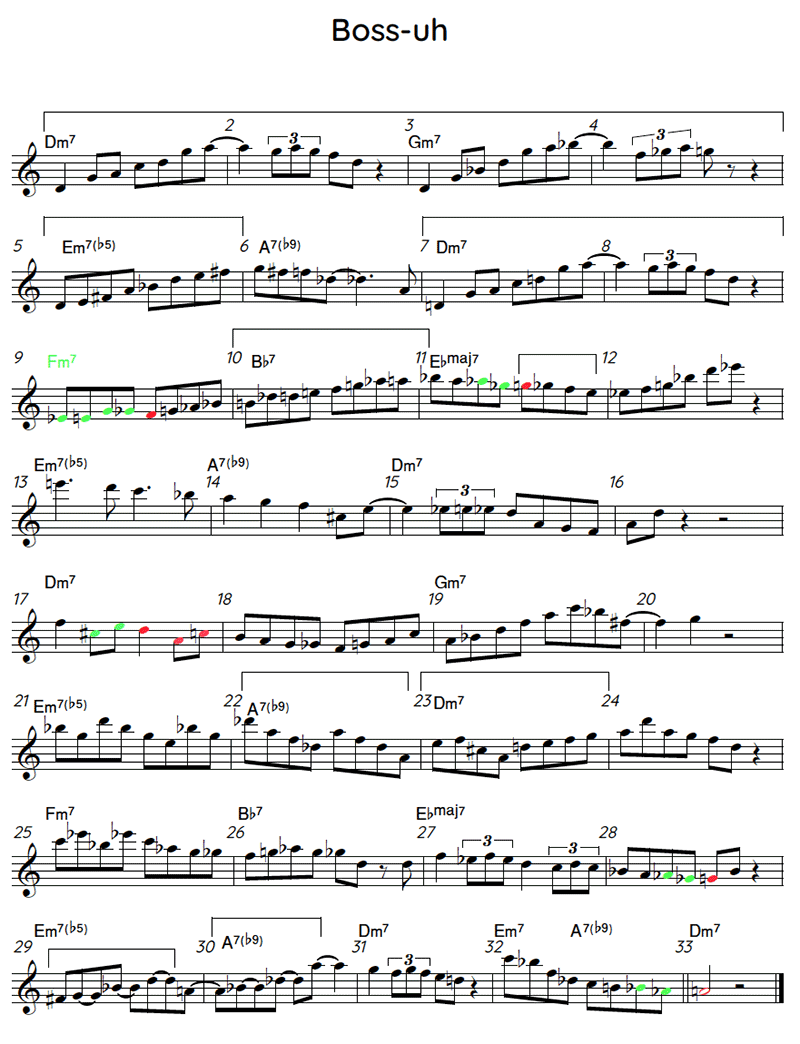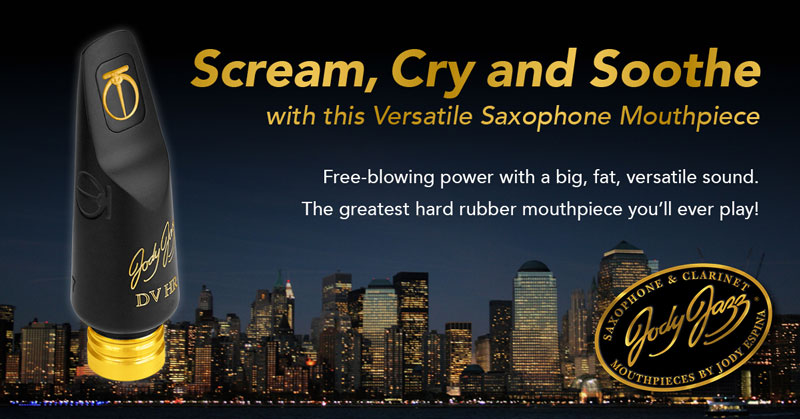A “User-Friendly” Way to Stretch Your Range and Improv Skills at Once
 Introduction
Introduction
The following article is a mini-lesson that incorporates an etude from Little Leaps and Sounds, which is my latest book geared towards the intermediate level and includes etudes written over twelve common jazz standards. After releasing Volume 1-3 of Leaps and Sounds between 2018-2020, I saw there might be a need for etudes written with the same harmonic approach but in a more traditional range of the saxophone. Whereas Leaps and Sounds makes extensive use of altissimo and integrating that range of the saxophone to the rest of the instrument, Little Leaps and Sounds caters to the written limits of the saxophone, while providing a mixture of traditional jazz vocabulary and contemporary modern phrases.
Unlike its advanced counterpart, Little Leaps and Sounds contains harmonic analysis for each etude, both in diagrammed and written text form. At this more intermediate level, it is perhaps even more important to explain why notes work and sound good. Thus, I’ve taken great care to address approach tone devices, melodic sequencing, diatonic phrases, melodic quotes, and other ingredients commonly found in the jazz solo we all love.
Analysis
The etude we’ll look at, titled, Boss-uh (which will shown in its entirety later on in this article), begins with a melodic sequence that is more intervallic in nature compared to most of the other etudes in this collection. The sequence is built upon fourths and thirds diatonic to the chords.
Measures 5 – 8

Measure five makes use of a major-flat-six pentatonic from the seventh of the chord. Using this scale implies the sound of locrian-sharp-two, which is the sixth mode of melodic minor.
The sixth mode of melodic minor by definition is half-diminished, with a natural two, expressed as a chord symbol as -7b5#2. Rarely seen, this chord can be used as a substitute for the much more commonly seen -7b5 chord. The function of the chord does not change, but rather, the sound of the chord and scale that accompanies it changes slightly with the second note being raised one half-step.
Measures seven and eight are in reference to the beginning melodic sequence/motif.
Measures 9 – 12

The green notes in measure nine constitute the “double chromatic below, double chromatic above” approach tone to the chord tone (red note) on beat three. Measure ten is implying the sound of half-whole diminished. The green notes in measure eleven are an enclosure to beat three, which then turns into a chromatic “crawl” from the third to the root on the downbeat of measure twelve.
Measure 17

The green notes in measure seventeen are examples of upper and lower neighbors to their target tones (red notes).
Measures 22 – 28

The prevailing sound in measure twenty-two is concert G augmented, via permutations of the triad itself. Measure twenty-three is implying the sound of melodic-minor. Measures twenty-five through twenty-eight are fairly diatonic with the exception of a few passing tones. The green notes in measures twenty-eight are an enclosure to their target on beat three (red note).
Measures 29 – 33

Measures twenty-nine and thirty make use of the melodic minor sound. For half-diminished chords, you can play the melodic minor scale from the third and for V7 chords you can play the melodic minor scale from the b9 as harmonic options. Both are being utilized on their respective chords in these two measures. Finally, the green notes in measure thirty-two are an enclosure to the downbeat of measure thirty-three.
The Complete Etude
Print-Friendly and More Readable PDF Sheet Music:

More on Little Leaps and Sounds
Because the ranges of these etudes are geared towards the traditionally accepted range of the saxophone, I’ve also gone through the process of creating a trumpet, bass clef, guitar and TAB versions of the book. It is with great thanks to Dr. Siereveld that we have a trumpet version, Marcus Lewis that we have a bass clef version and William Flynn that we have concert and guitar-TAB versions of the book. Each of the books comes with play-a-long tracks that feature professionally recorded soloist tracks to play along with, as well as tracks that allow the performer to play without the soloist. The version of the book for Eb instruments is available with both alto and baritone saxophone recordings and the version for Bb instruments is available with both tenor and soprano saxophone recordings, all of which have been recorded by myself. The trumpet etudes have been recorded by Dr. Eric Siereveld, the concert etudes by William Flynn and the trombone etudes by Jack Kotze.
Whether you are looking to do a deep-dive into harmony or simply want to enjoy playing some newly created etudes with a fresh harmonic vibe, Little Leaps and Sounds will be a great addition to your collection of study materials.






September 19, 2021 @ 12:52 pm
Thanks, interesting analysis and etude.
However, I realized with the phrase: ‘The prevailing sound in measure twenty-two is concert G augmented’, and that that measure was actually an A augmented, that the etude was actually a Bb instrument version of Blue Bossa, and you were referencing the concert changes.
One more thing: I think it would be clearer if the A7b9 chord showed a C#, not a Db.